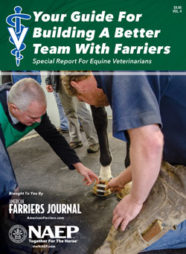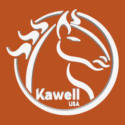The two accompanying charts below outline the costs for a veteran farrier who works with 150 different horses and handles 262 trimmings, plus 788 trimmings and shoeings a year.
His yearly fixed costs of $32,612 worked out to an average of $31.06 for each of the trims and shoeings done during the year. This is the amount the farrier invested in each horse before ever getting out of the truck.
Then there are variable costs, which change with the number of trims and shoeings done during the year. Based on the 1,050 trims and shoeings in this example, the farrier would have $40.69 invested in each trim or shoeing visit.
Adding together the fixed and variable costs, the farrier has invested $71.75 in each trimming or shoeing done during the year. Based on these fixed and variable costs, he can then calculate how much he wants to be paid for his work before setting his prices for the coming year.
There’s no simple way to calculate your costs, as each farrier has a different situation. But the example shown here will serve as a starting point. Then you can decide how much you should be paid for your labor, management skills and desired return on investment before settling on a new pricing strategy for your farrier work.


NOTES:
- This example is based on a sole proprietorship and a family consisting of the farrier, a spouse and two children younger than 15.
- The example is based on 150 horses that are only trimmed or trimmed and shod an average of seven times.
- A depreciation schedule of 7 years is used for the vehicle, 10 years for the farrier rig body and 5 years for tools and computer.
- Hand tools include clinch cutter, nail puller, clincher, pulloffs, rasp handles, driving hammer, nippers, hoof pick, hoof brush, dividers, gauges, pritchels, back punches, rounding hammer, hoof testers, etc.
- Other tools include anvil, hoof stand, shoeing box, forge, apron, welder, brazing equipment, drills, pad cutter, etc.






